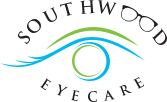That morning cup of coffee might perk you up—but could it also be irritating your eyes? For some individuals, coffee can contribute to dry eyes or make existing symptoms feel worse. If you’ve noticed your eyes feeling dry, itchy, or tired after your caffeine fix, you’re not alone. Caffeine affects the body in many ways, and for some people, it may interfere with tear production or lead to mild dehydration, both of which can contribute to dry eye symptoms.
While not everyone will experience this effect, those who already struggle with dry eyes or consume high amounts of caffeine may be more sensitive to these changes. Understanding how your coffee habit may be connected to your eye comfort is a helpful first step.
Fortunately, you don’t have to give up coffee entirely—by making a few small adjustments to your routine and staying hydrated, you can support eye health while still enjoying your favorite brew.
What Causes Dry Eyes?
Dry eye syndrome occurs when your eyes don’t produce enough tears or fail to maintain the right balance of moisture. Common causes include:
- Aging
- Certain medications like antihistamines or antidepressants
- Medical conditions such as diabetes or rheumatoid arthritis
- Environmental factors like wind or dry air
While these are well-known culprits, caffeine consumption is often overlooked.
How Caffeine Affects Your Eyes
Caffeine, found in coffee, tea, energy drinks, and even chocolate, is a well-known stimulant. It provides a sense of alertness and combats drowsiness, but it can also impact your eyes in several ways that may contribute to dryness.
Dehydration
Caffeine is a diuretic, meaning it increases urine production. This can reduce overall hydration in the body and potentially diminish the moisture available to your eyes.
Blood Vessel Constriction
Caffeine acts as a vasoconstrictor, narrowing blood vessels and potentially decreasing blood flow to the tear glands. This can reduce tear production, resulting in a lack of lubrication for your eyes.
Tear Gland Interference
Caffeine’s effect on the nervous system may also interfere with the function of the glands responsible for producing tears, further exacerbating dry eye symptoms.
It’s worth noting that individual responses to caffeine vary, so not everyone will experience these effects to the same degree.
How to Combat Dry Eye Symptoms
If coffee is leaving your eyes irritated, here are steps you can take to reduce the discomfort without having to give up your favourite brew entirely.
Limit Your Caffeine Intake
Scaling back your caffeine consumption can reduce its impact on tear production and eye hydration. Opt for smaller servings, or switch to decaf coffee or herbal teas to maintain the ritual without the caffeine hit.

Stay Hydrated
Staying well-hydrated plays a key role in maintaining healthy tear production and overall eye moisture, helping to prevent the dryness and irritation that can develop when your body doesn’t get enough fluids.
Taking Regular Screen Breaks
Are you sipping coffee while staring at a screen? Prolonged screen time can exacerbate dry eyes. Follow the 20-20-20 rule: every 20 minutes, look at something 20 feet away for 20 seconds to give your eyes a break.
Use a Humidifier
Dry air can worsen symptoms of dry eyes, especially in environments with indoor heating or air conditioning. A humidifier can help maintain adequate moisture in the air.
Wear Protective Eyewear
On windy days or during outdoor activities, wear wraparound sunglasses to shield your eyes from harsh elements that could aggravate dryness.
Practice Proper Eye Hygiene
Wash your hands before touching your eyes, and avoid rubbing them if they feel irritated. This not only prevents potential infections but also helps reduce further irritation.
Try Artificial Tears
Over-the-counter artificial tear solutions offer immediate relief by adding moisture to the eyes. Keep them handy for use throughout the day.
Professional Treatments for Dry Eyes
When self-care isn’t enough to manage your symptoms, consider professional treatments specifically designed for dry eye sufferers.
- Prescription eye drops: Certain medications like Restasis or Xiidra can improve tear production and reduce inflammation, especially for chronic cases.
- Heat therapy with warm compresses: Heat masks or warm compresses can unclog the oil glands in your eyelids, improving the hydration balance of your tear film and reducing irritation.
- BlephEx therapy: An in-office treatment that removes bacteria and debris from the eyelid margins, BlephEx can significantly improve lid hygiene and alleviate recurring dry eye symptoms.
- LipiFlow Thermal Pulsation: A specialized treatment that combines heat and gentle pressure to unclog blocked meibomian glands. This helps improve the quality of your tears and provides long-lasting relief for patients with evaporative dry eye.
- Intense pulsed light (IPL): IPL uses light to target blood vessels and reduce inflammation around the eye area.
- Radiofrequency (RF) treatment: Uses controlled heat energy to unblock oil glands in the eyelids, improving tear quality and providing long-lasting relief from chronic dry eye symptoms.
- Punctal plugs: Tiny, biocompatible plugs inserted into tear ducts can help retain natural tears for longer, offering enduring relief from dryness.
Finding Balance Between Coffee & Eye Health
Enjoying coffee doesn’t mean you need to suffer from dry, irritated eyes. Awareness of the connection between caffeine and dry eye symptoms, combined with proactive habits, can help you maintain both your coffee love and your comfort.
If symptoms persist, consulting with an eye care professional is key. Southwood Eyecare offers tailored treatments designed to relieve discomfort and protect your overall eye health. Book an appointment today to explore effective solutions for dry eyes and restore your vision’s comfort and clarity.




